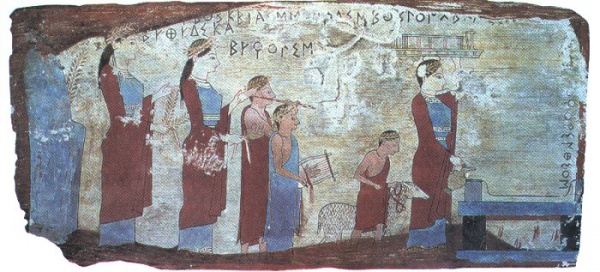Facts About Pitsa Panels
The Pitsa panels, also known as the Pitsa tablets, are a captivating collection of painted wooden tablets unearthed near Pitsa, Corinthia. These panels hold the distinction of being the earliest surviving examples of Greek panel painting. Discovered in a cave near the village of Pitsa in the 1930s, they date back to around 540–530 BC, during the Archaic period of Greek art.
Crafted from thin wooden boards, these tablets were covered with stucco and painted using mineral pigments. Remarkably, despite their ancient origins, the vibrant colors on the tablets remain well-preserved. The artists used only eight colors without any shading or gradation. It is likely that they outlined the figures in black first and then filled them in with color.
The scenes depicted on the tablets are religious in nature, associated with the cult of the nymphs. One tablet illustrates a sacrifice to the nymphs, featuring women approaching an altar accompanied by musicians. Another tablet shows a dedication to the nymphs, displaying three overlapping female figures, possibly representing the nymphs themselves.
These panels served as votive offerings linked to the rural cult of the nymphs, a common religious practice in ancient Greece. The quality of the artwork suggests they were accessible to the lower socioeconomic segments. The materials used were perishable, which explains their rarity in the archaeological record.
The significance of the Pitsa panels lies in their status as some of the few surviving examples of ancient panel painting, a highly regarded but seldom preserved art form. As the earliest known specimens, they offer valuable insights into ancient Greek artistic practices. The panels are crucial for understanding a style of art that has largely vanished, and their preservation is attributed to the unique climatic conditions of the cave where they were found.

 Turkey
Turkey